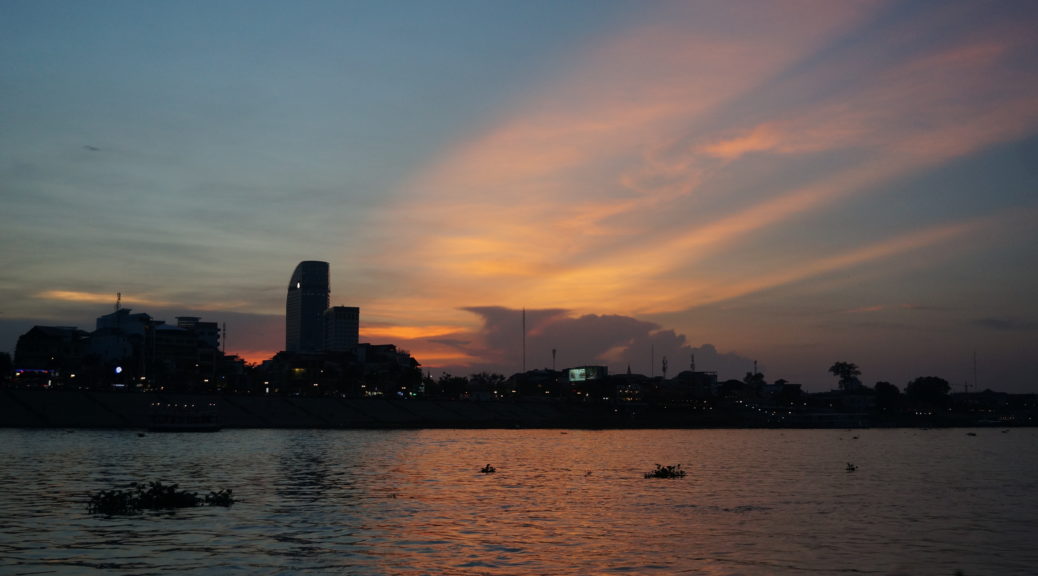Phnom Penh was bustling, dusty, and vibrant, which was exactly what we were looking for after our tour through quiet Southern Cambodia. Modern high-rises alternated with scrabbly little shops and intriguing restaurants. Tuk-tuks zipped through the streets, dodging scooters and cars that swarmed the roads like insects.
It was the perfect place to finish up our month in Cambodia.
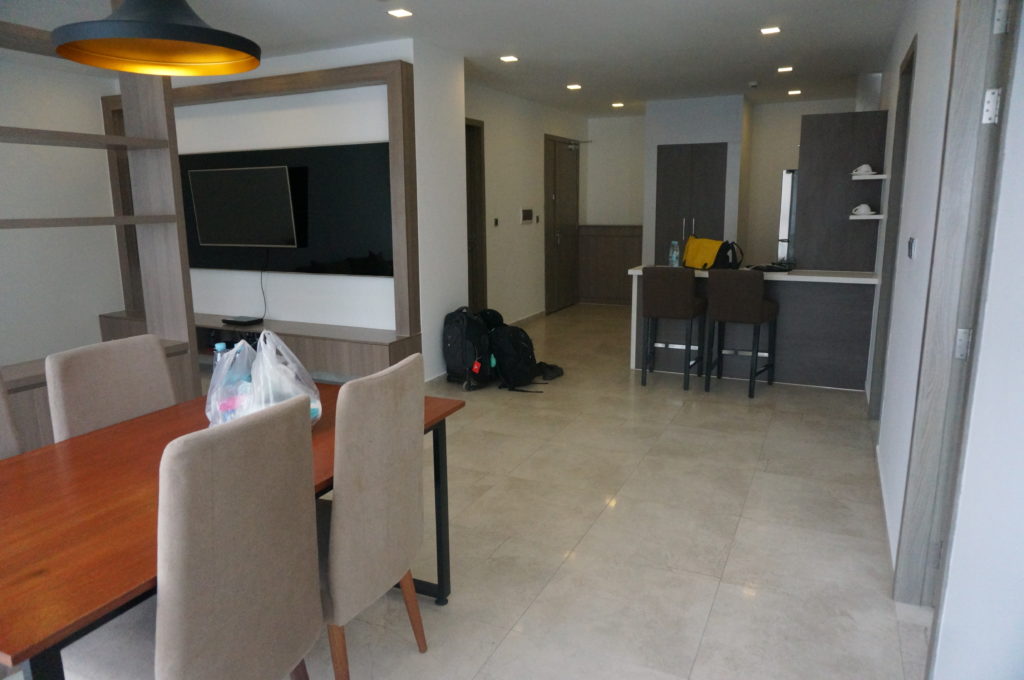
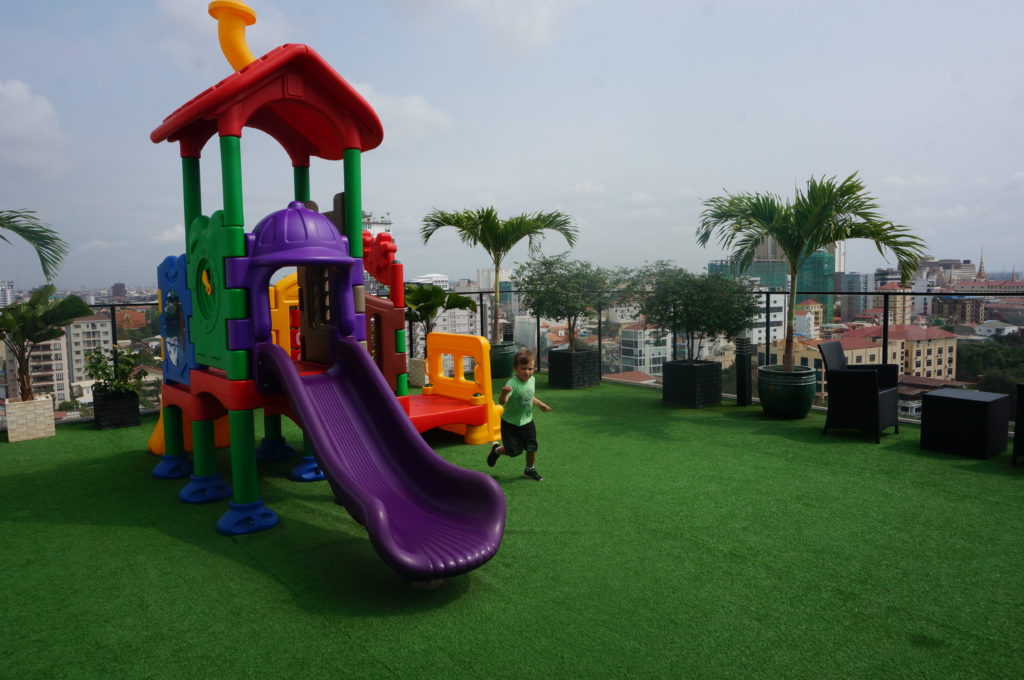
Our plans were simple: explore the city, enjoy some home-cooked meals in our sweet apartment, see a few sights, and – a little indulgence for me – hit the local CrossFit gym. After the horrors of the old-school rusty-weight gyms in Kampot, Sihanhoukville, and Siem Reap, I was in heaven.
The Mekong
I spent quite a bit of time at CrossFit Amatak in Phnom Penh during our stay, and the members there helpfully gave us suggestions for things to do in the city. One of those suggestions was a boat tour on the Tonle Sap and Mekong rivers, so we sent the top tour company on TripAdvisor an email to sign up.
The boat pulled away from the wharf just before sunset, and we kicked back and relaxed. The boat had an upper deck, so the boy amused himself by climbing up the ladder, running around up top, and pretending he was a pirate. The crew passed around cold beverages and plates of fresh fruit, and we quietly watched as the sun went down over the city.
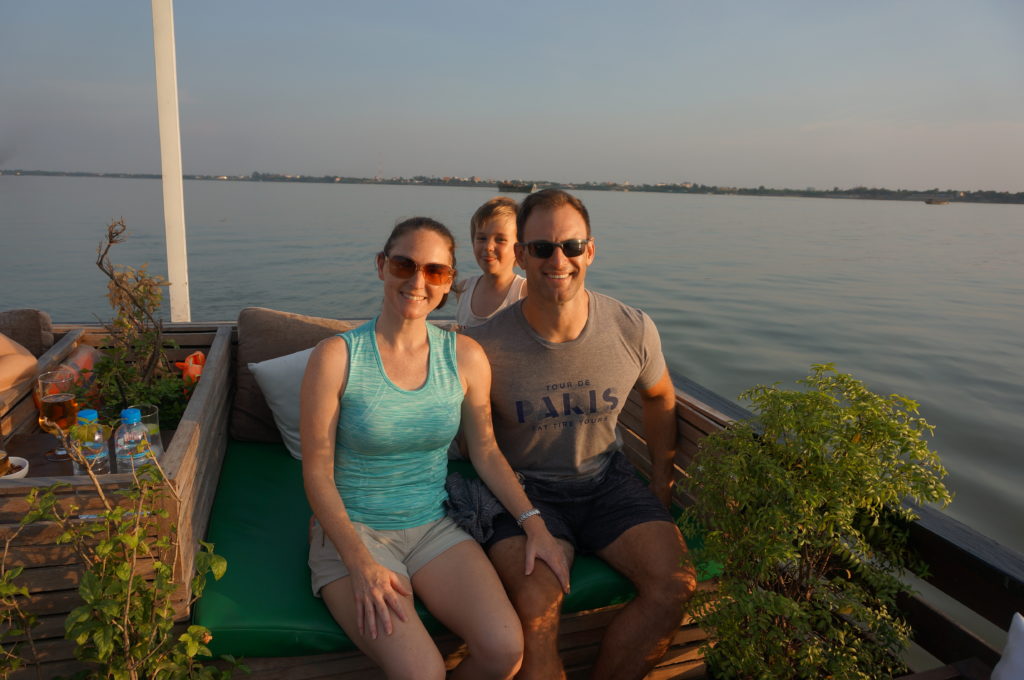
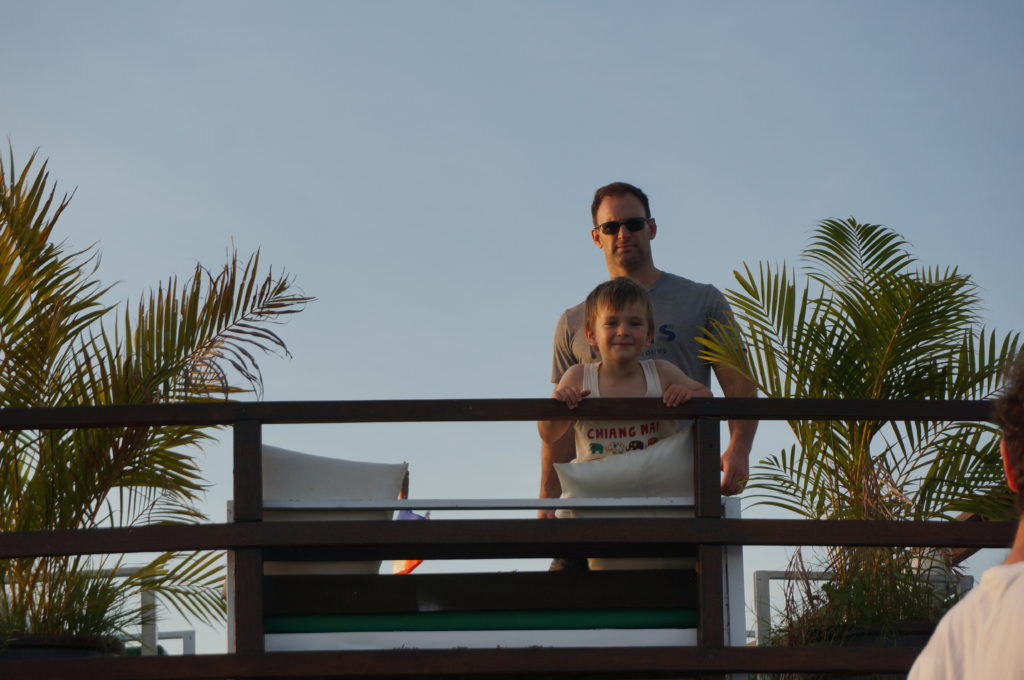
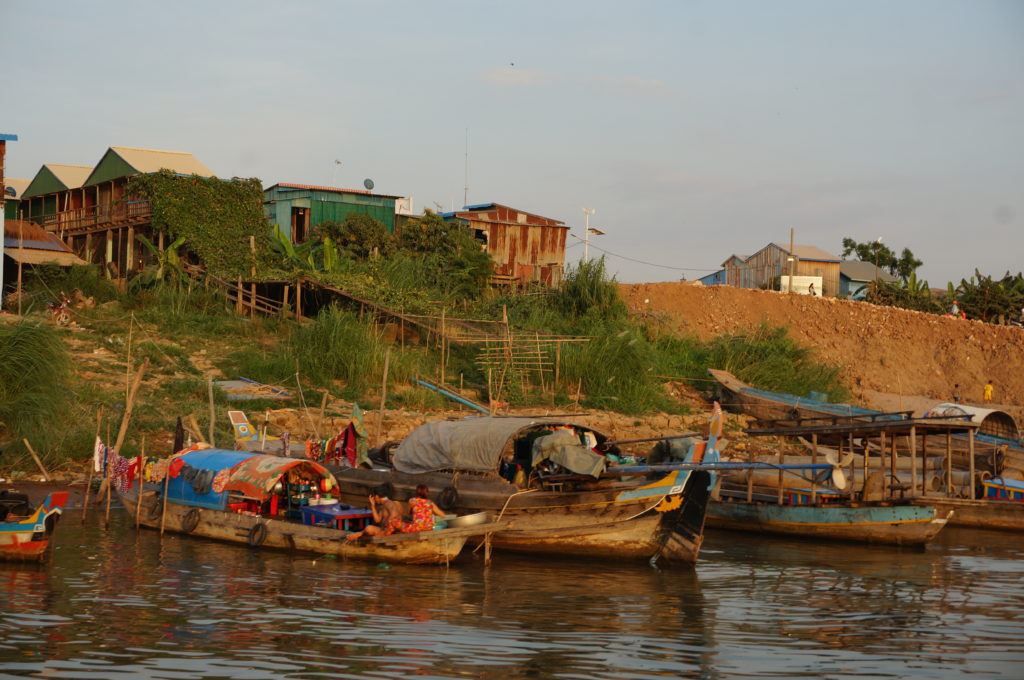
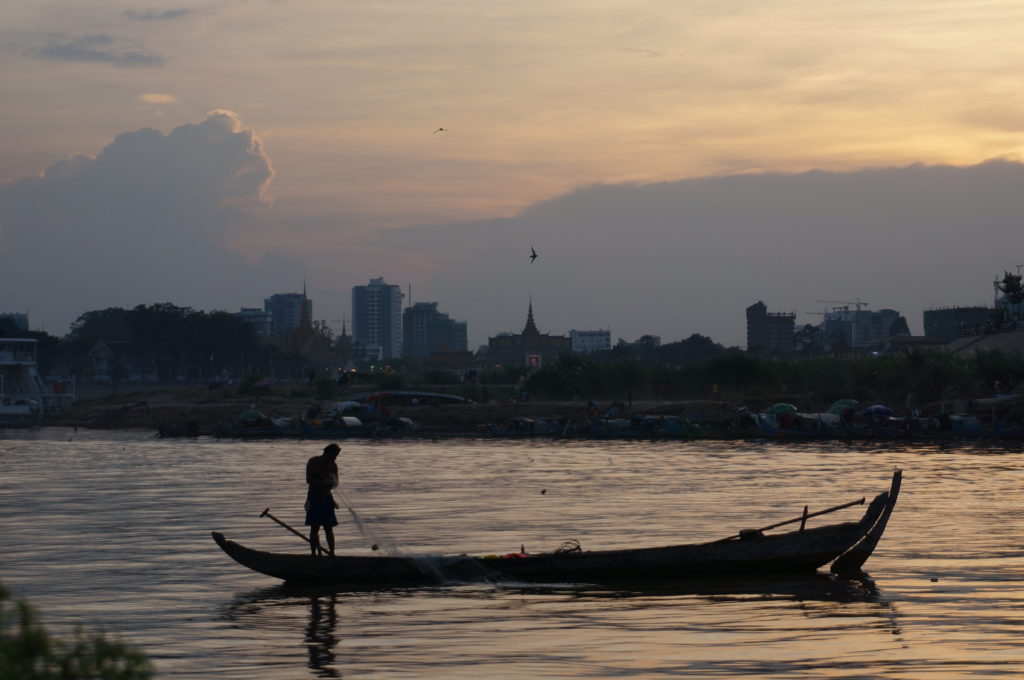
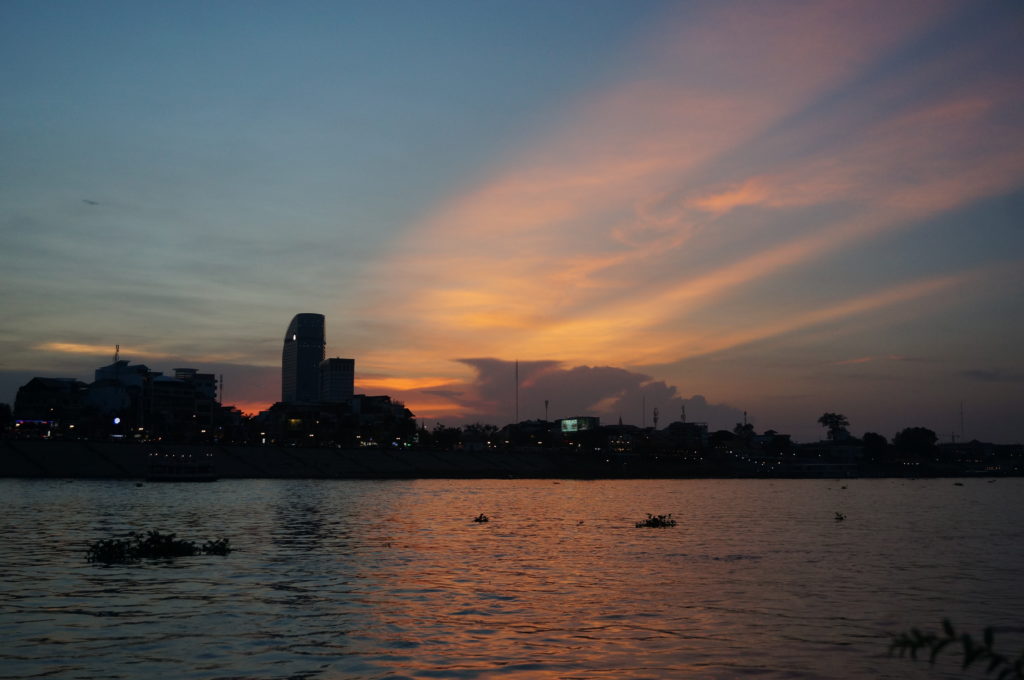
Tears of Cambodia
Every city has its “must see” sights, and in Phnom Penh it’s the Killing Fields. During the height of Khmer Rouge rule from 1975-1979, an estimated 1.5-3 million Cambodians – about a quarter of the total population – died from execution, disease, or starvation. Executions were carried out in camps outside the cities in areas later to become known as “The Killing Fields”.
In the early 80’s one of these areas just outside of Phnom Penh known as Choeung Ek was excavated, and the remains of thousands of victims were found. Today Choeung Ek is a memorial and one of the most-visited sites in Phnom Penh.
Juliann and I decided that visits to Choeung Ek and Tuol Sleng (the detention center and torture facility known as S-21) were probably a bit too heavy for Braeden to see, so we took turns visiting. She hopped in a tuk-tuk on a Tuesday and took off for half a day to check out both sites, and I did the same the next day.
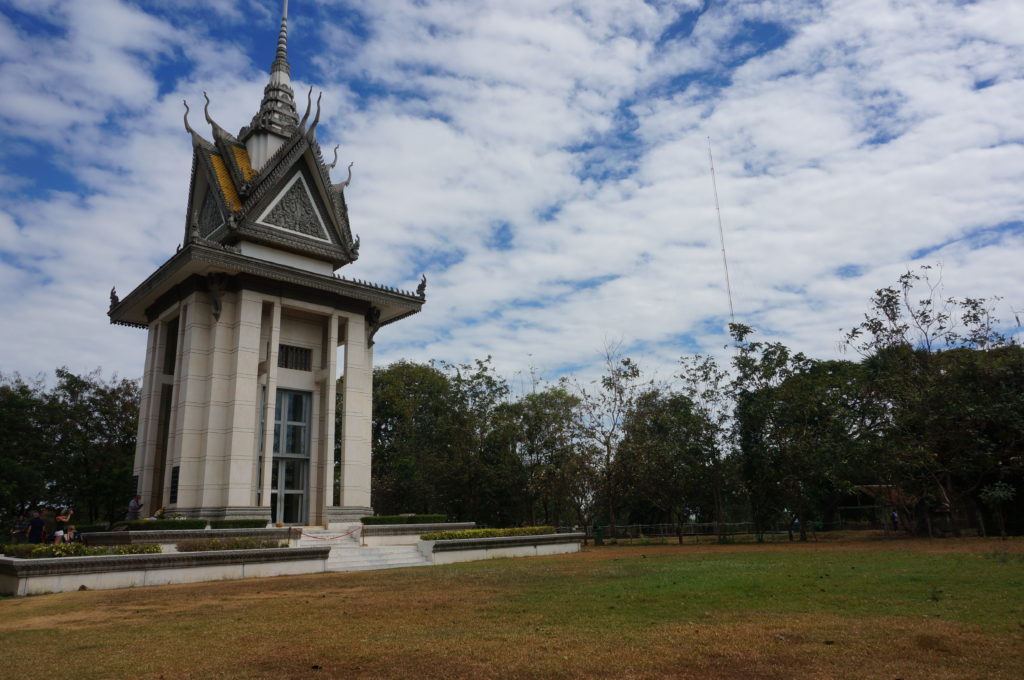
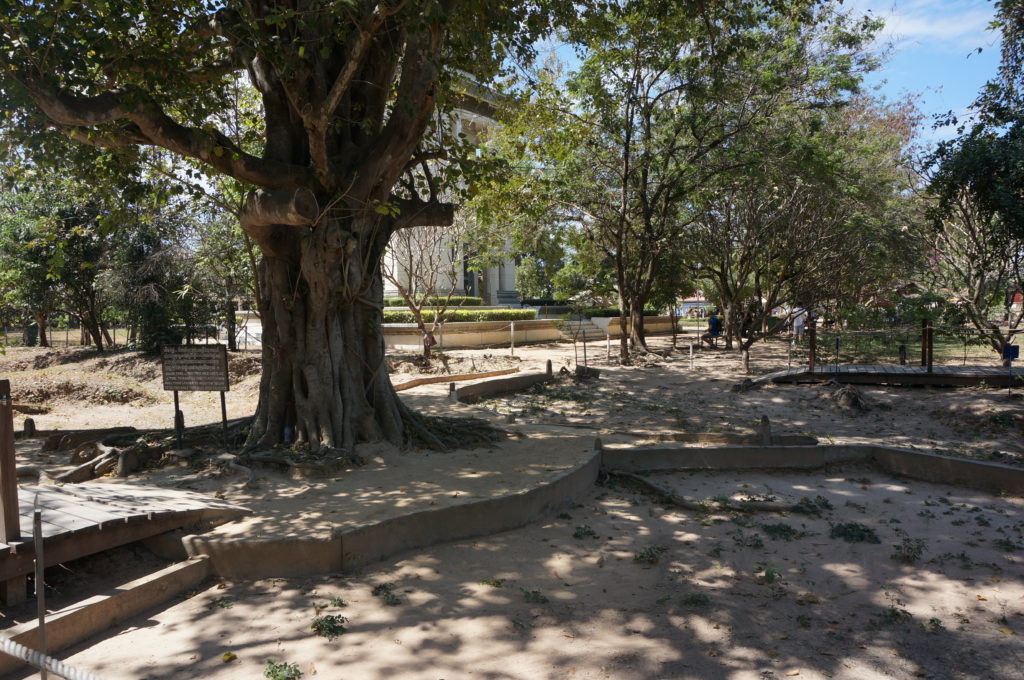
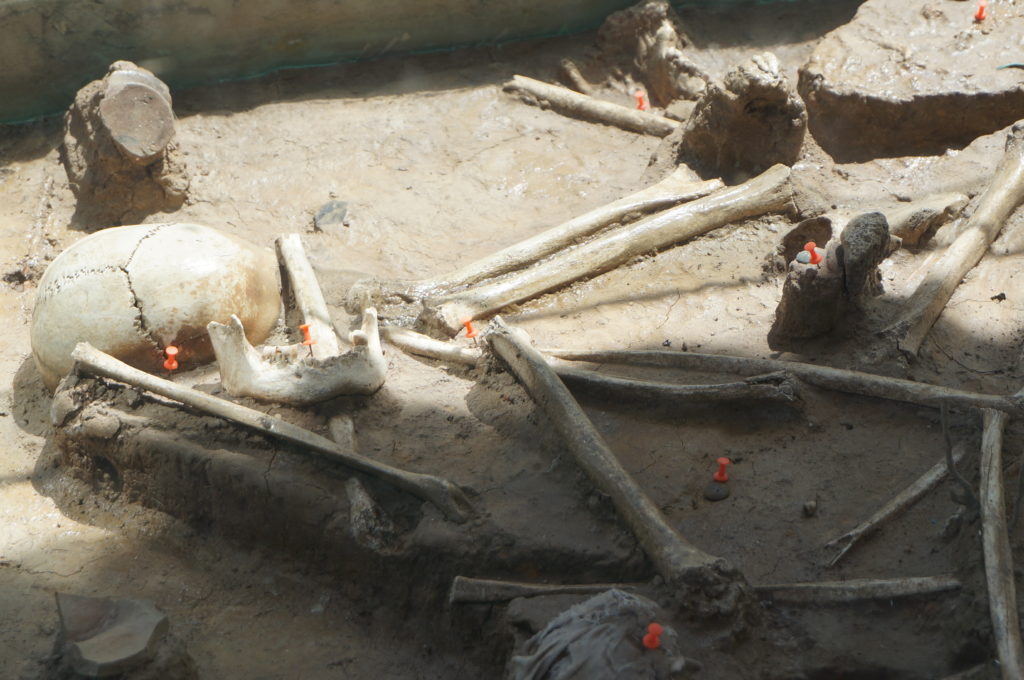
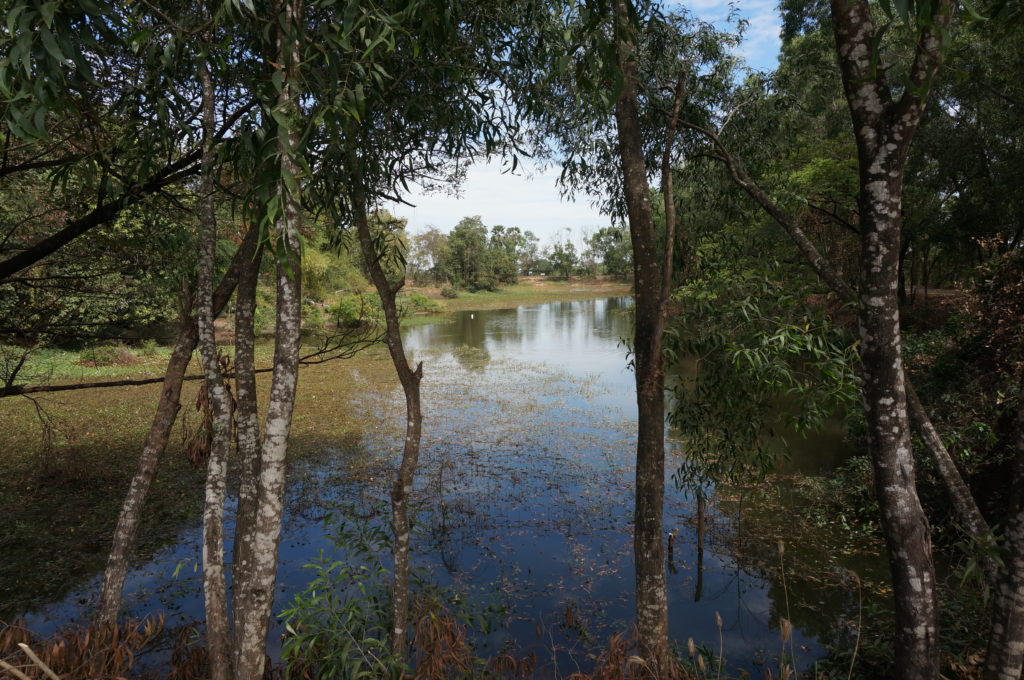
Choeung Ek was formerly an orchard and the Khmer Rouge chose it as a location for their executions because it was far enough from the city that screams wouldn’t be heard.
Bullets were scarce, so all executions were carried out with everyday tools: hammers, pickaxes, saw-toothed palm fronds, garden hoes, etc.
Today Choeung Ek is peaceful. There’s little, other than the signs and the memorial, to indicate what happened here 40 years ago. But even now, if you look carefully, you can see fragments of clothing poking up out of the ground, and the occasional bone or tooth surfaces after a hard rain.
It is a solemn, terrible place, a testament to yet another time in very recent history when human beings did horrible things to one another.
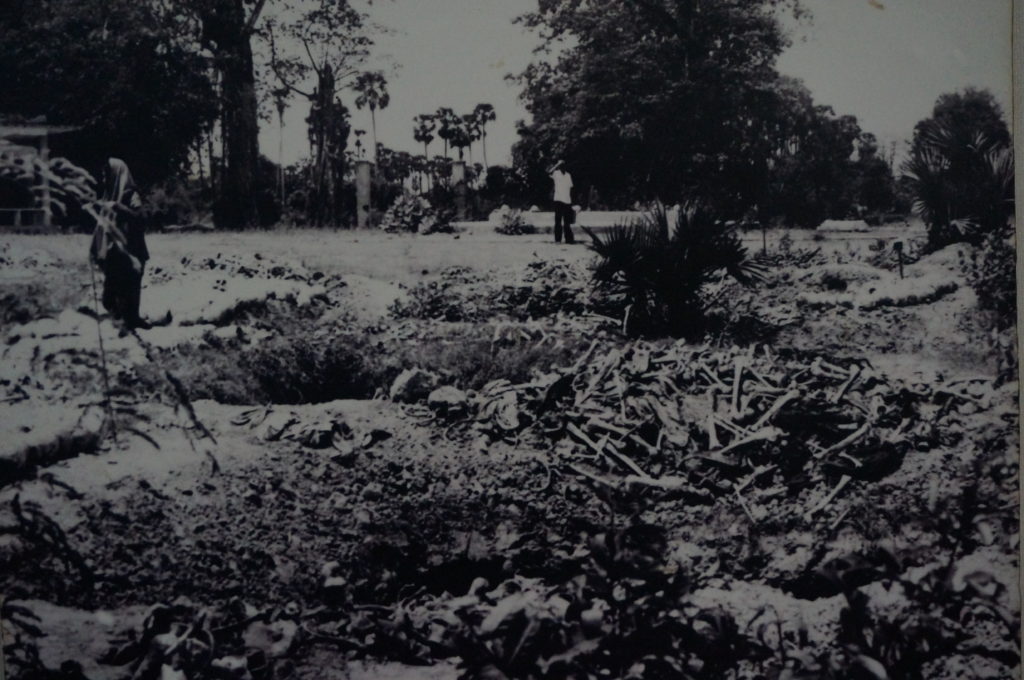
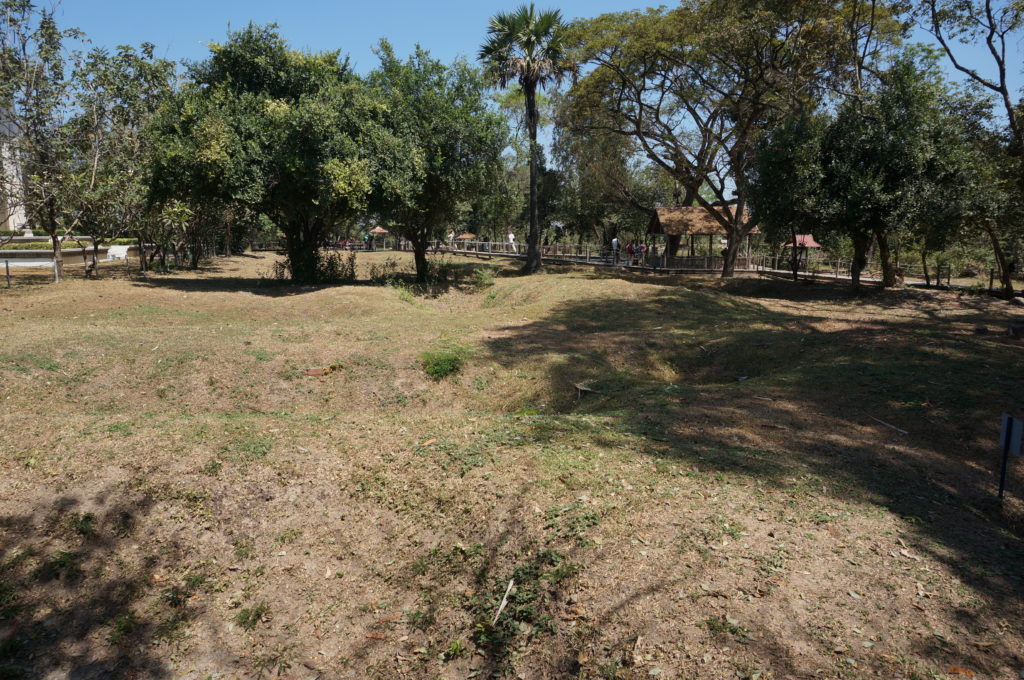
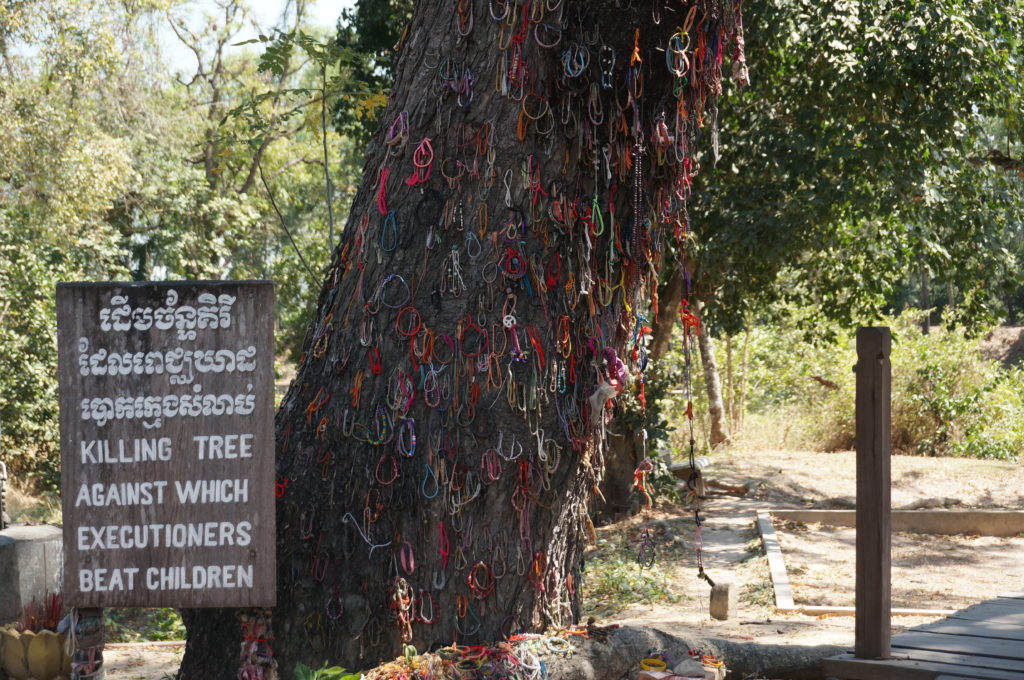
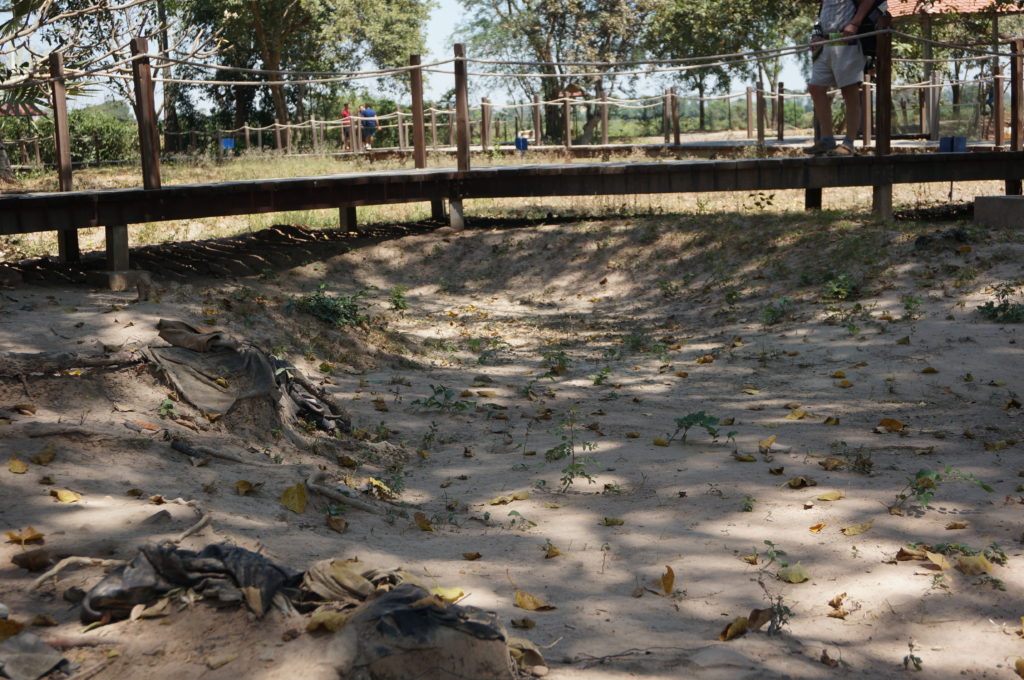
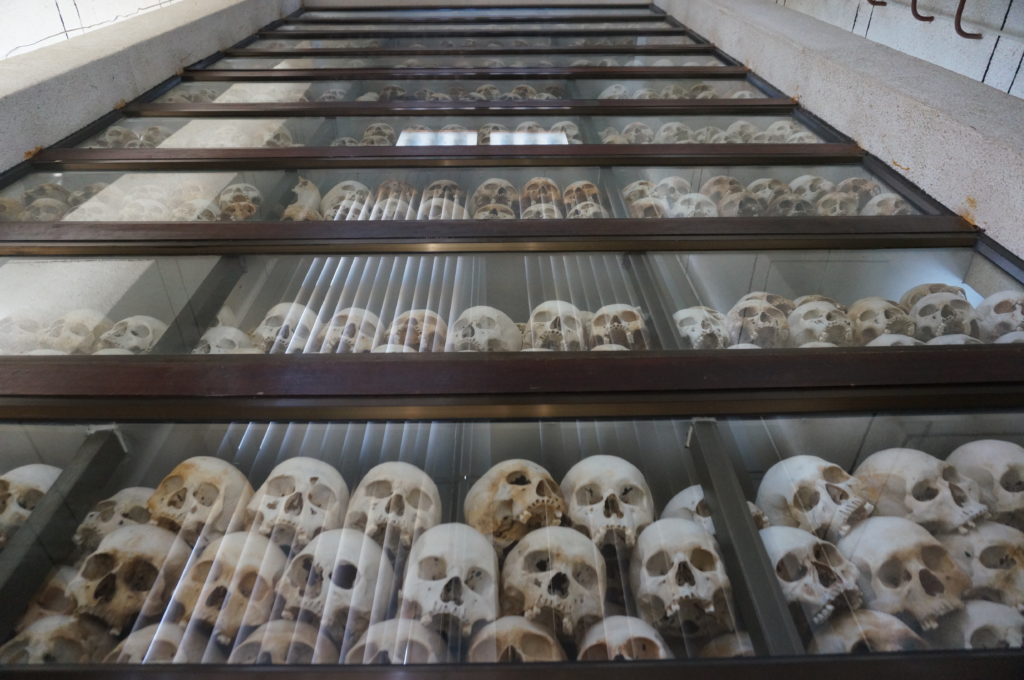
I found Choeung Ek much more moving than Tuol Sleng (S-21). Juliann, a former high-school English teacher, felt differently.
Adjusting to Island Life in Mauritius
When the Khmer Rouge captured Phnom Penh in 1975 and drove the residents out, they took over many buildings, among them a high school which would soon be renamed S-21.
The Khmer Rouge began using it as an interrogation center, and over the course of four awful years many thousands of prisoners were tortured in S-21, then taken to Choeung Ek to be brutally executed.
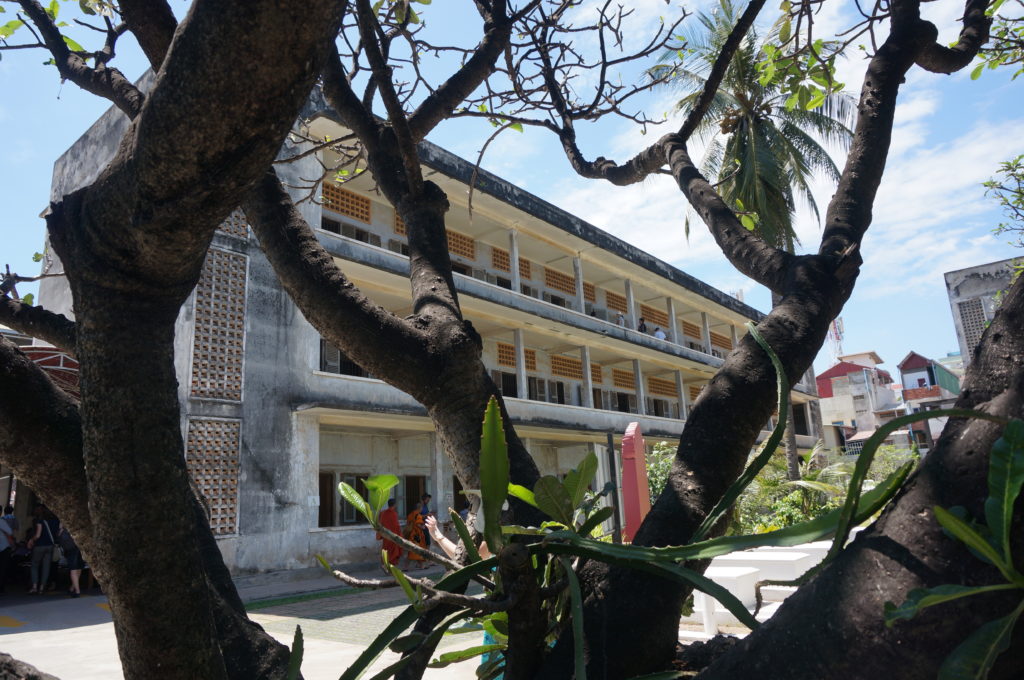
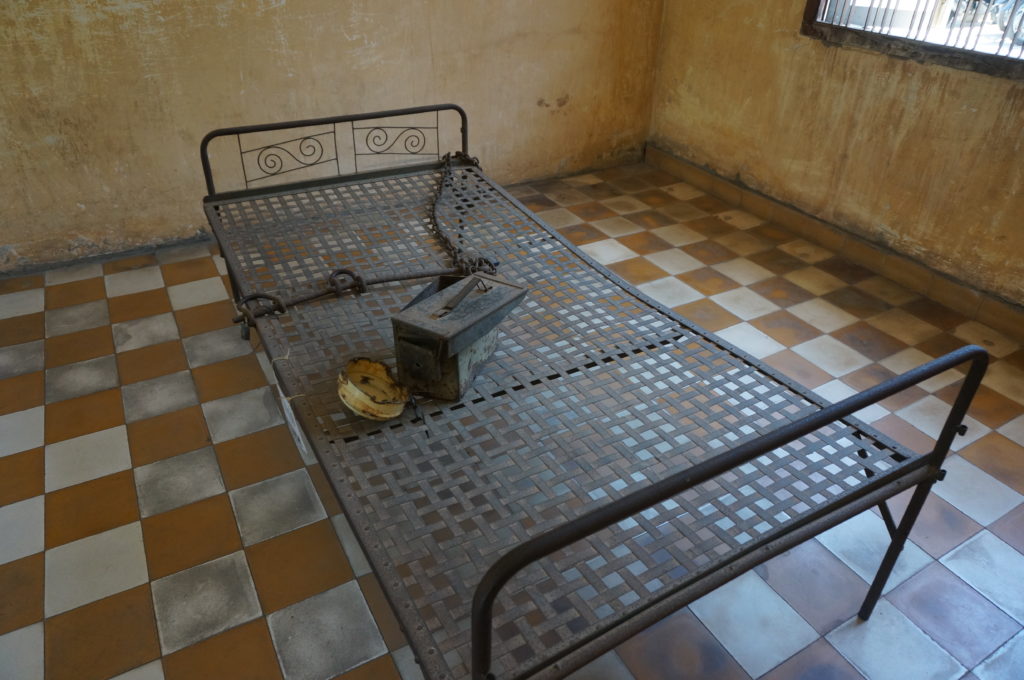
S-21 today is a Genocide Museum, and it includes a well-done audio tour that takes about an hour. Each of the buildings in S-21 has been restored very simply, and there are many hundreds of photographs affixed to the walls that you can browse during the tour.
The photographs, taken of prisoners during intake, interrogation, and frequently after their deaths, are heartbreaking.
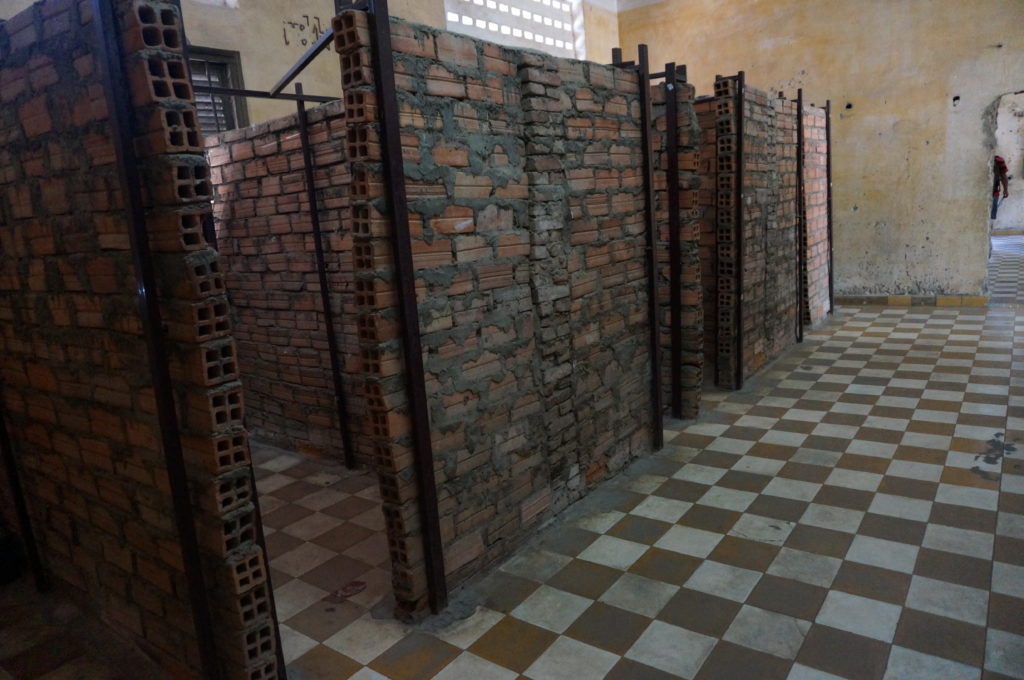
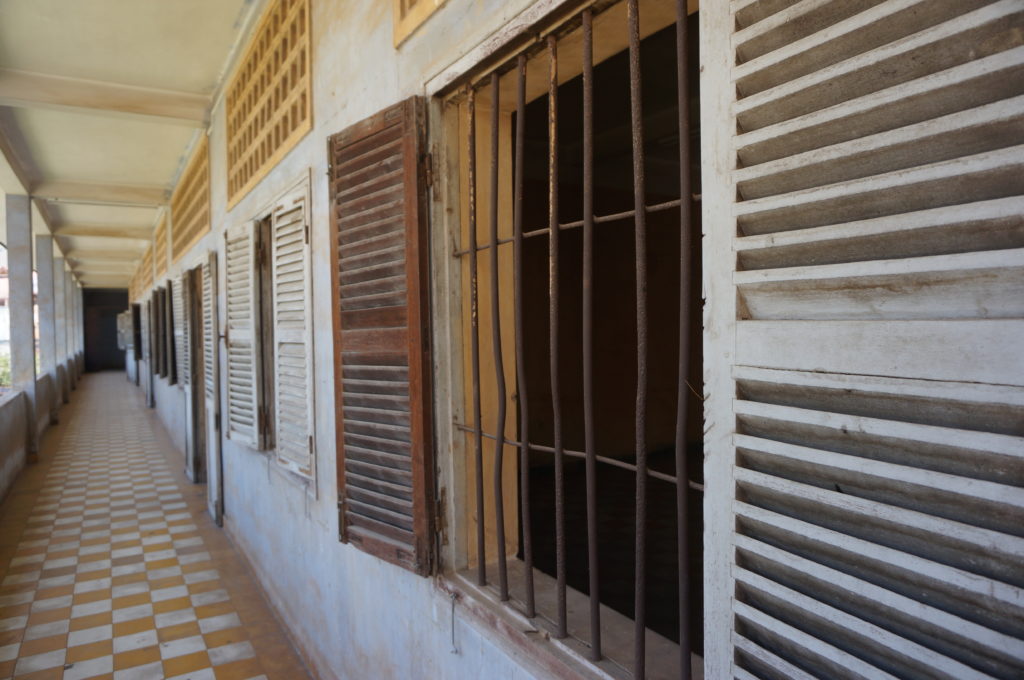
After visiting both The Killing Fields and S-21 we had a much better sense of what the people of Cambodia had endured in the past few decades. Nearly everyone we spoke with had a relative that had died during the rule of the Khmer Rouge, and the country is still struggling to recover today.
The Silk Islands
Before we left Phnom Penh we made sure to do a bike tour of the islands across the Mekong known asThe Silk Islands, as we had heard that it was a nice way to see the surrounding countryside.
We did the tour with Grasshopper Adventures, a highly rated company on TripAdvisor, and we weren’t disappointed. The bikes were solid and well maintained, and our tour guide was fantastic. There were only about eight of us in the group, so the entire daylong tour felt like a trip with friends.
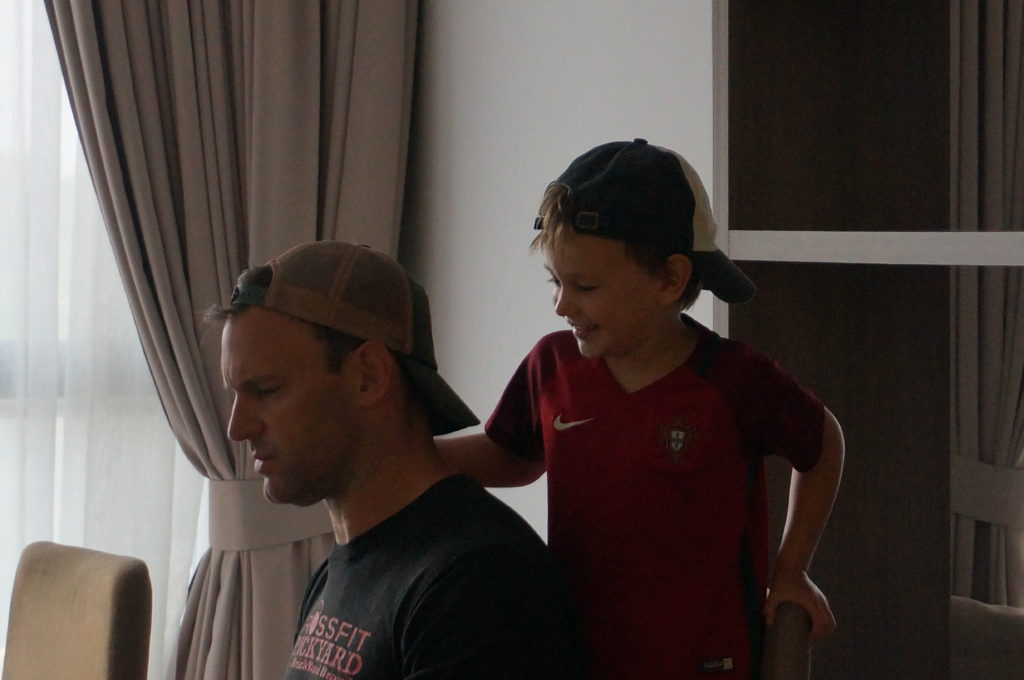
As an added bonus Braeden got to use a tagalong bike, which he’d never done before. He was frigging adorable on that bike, and while it was nice having him right behind me where I knew he was safe, I did wish I could have watched him ride around for a bit.
The tour was a couple of ferry rides, a trip to a family silk farm, a cycle through the countryside (about 12 km), and a delicious lunch at a local restaurant.
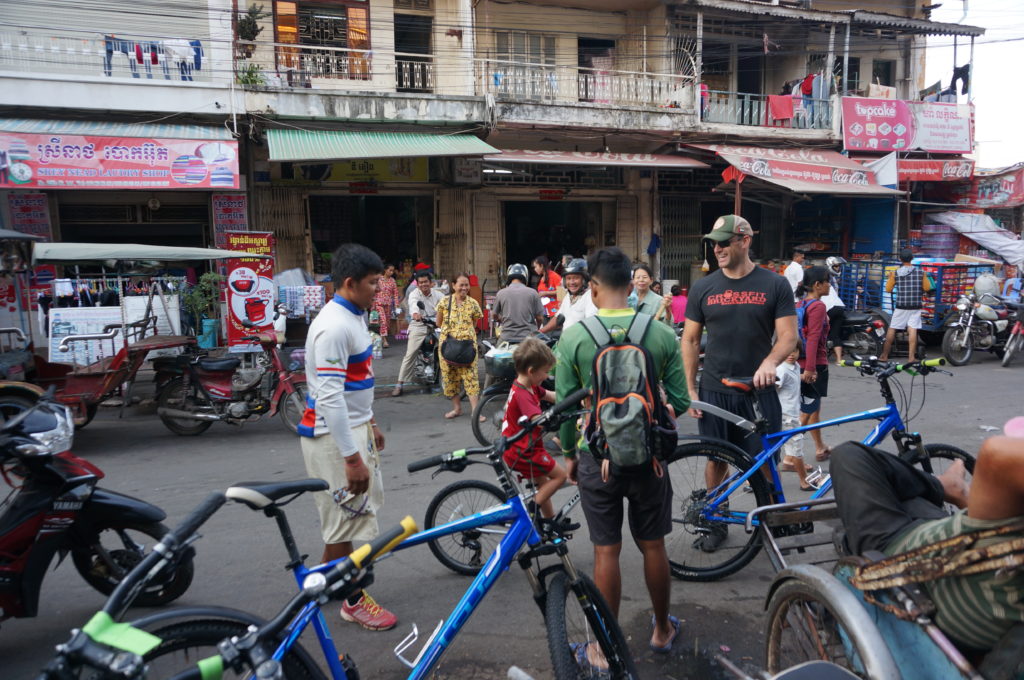
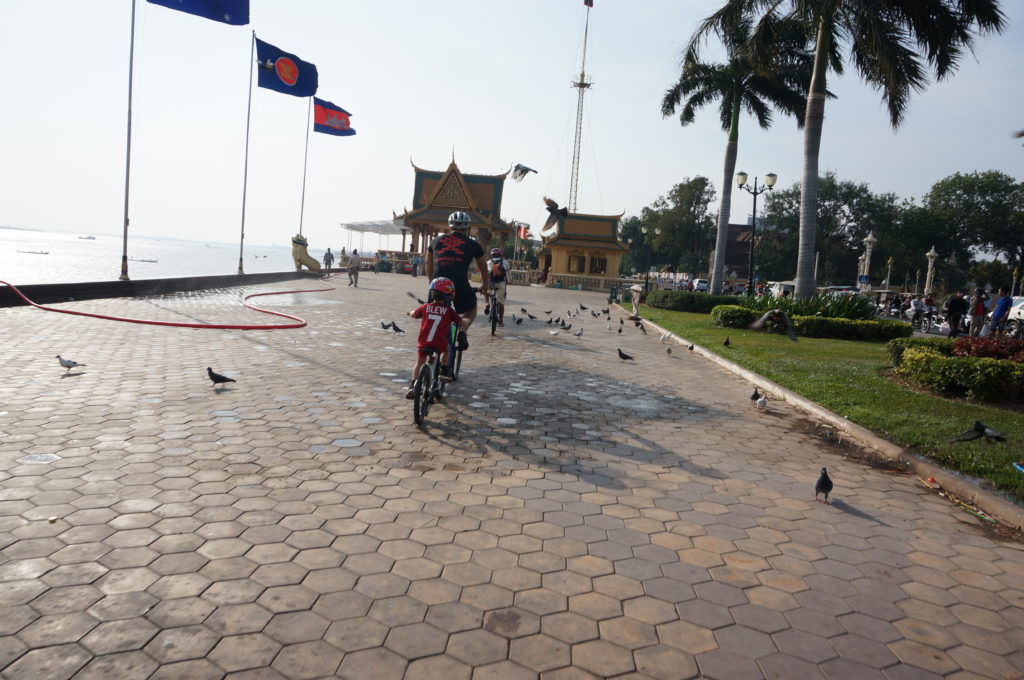
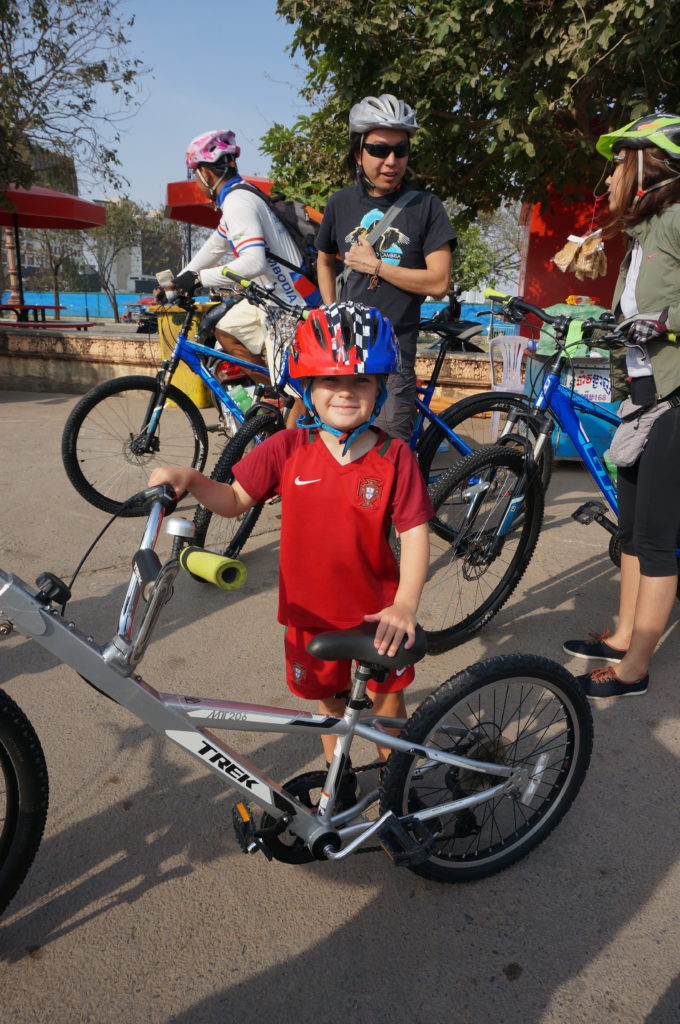
The silk farm in particular was far more interesting than I thought it would be. It was a small building, no more than 100 feet long and 20 or 30 feet wide. Inside our guide took us through all the different steps of preparing silk: growing the cocoons, boiling them, spinning the silk into a single thread, weaving on a loom, and of course, selling the finished products in a tiny store.
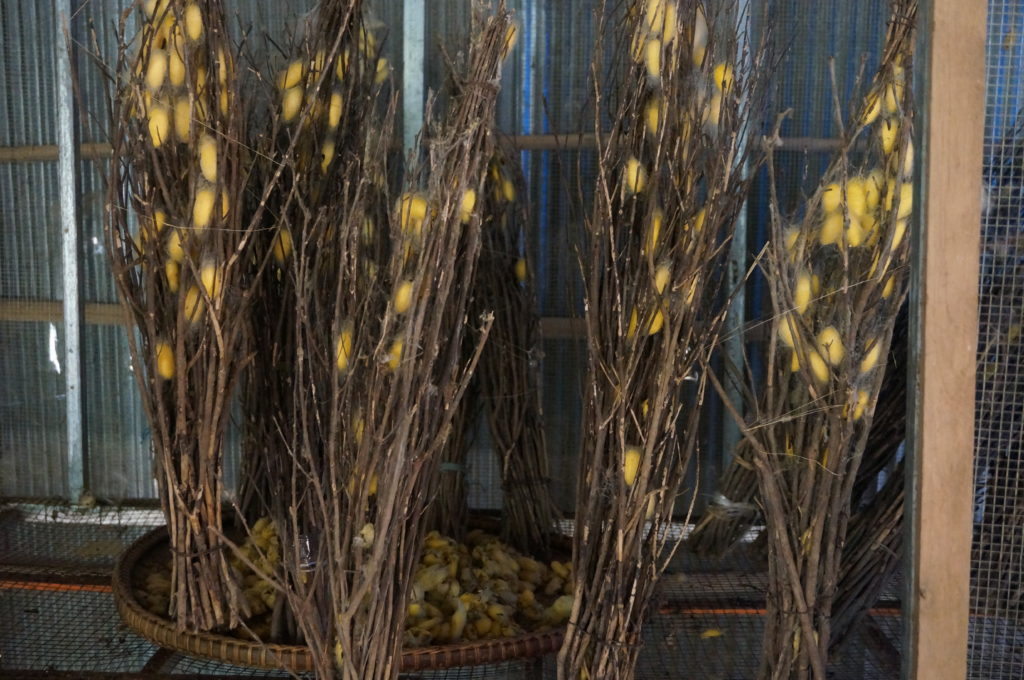
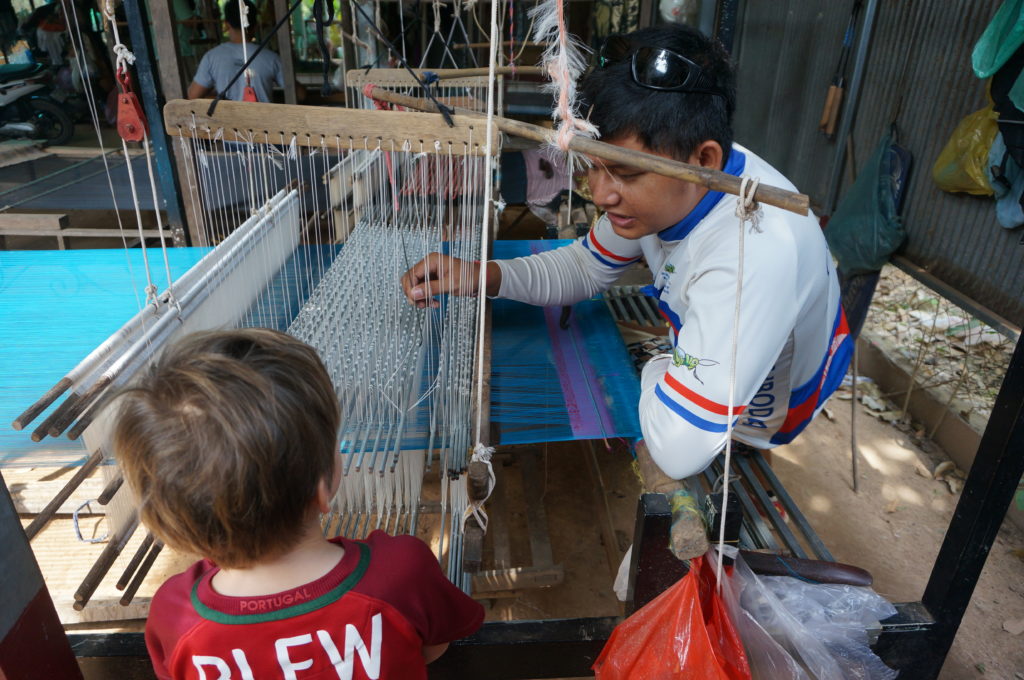
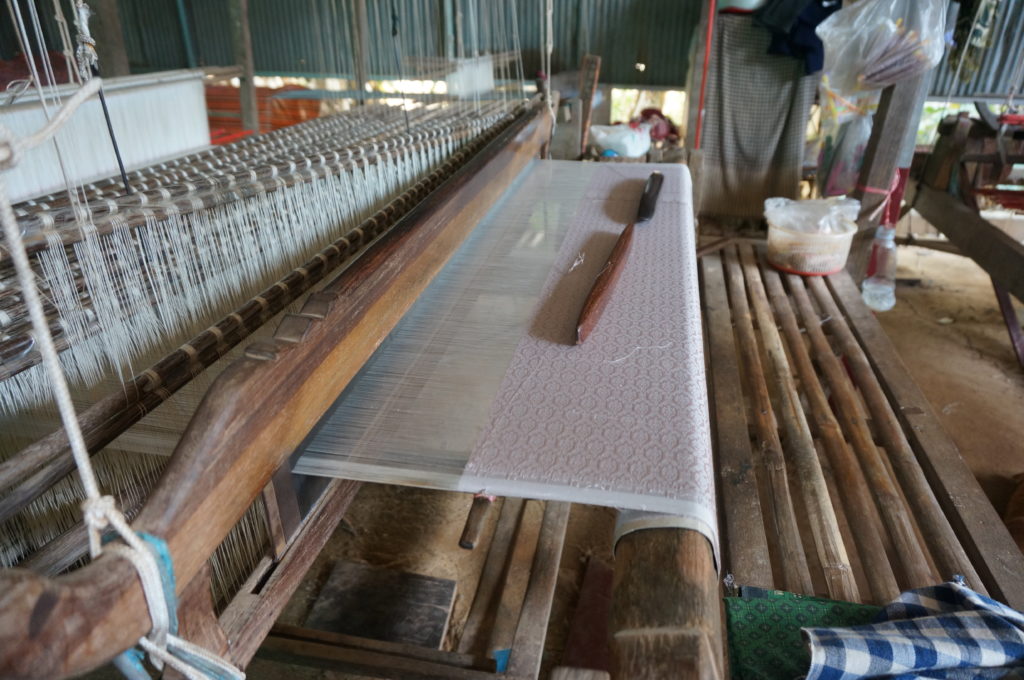
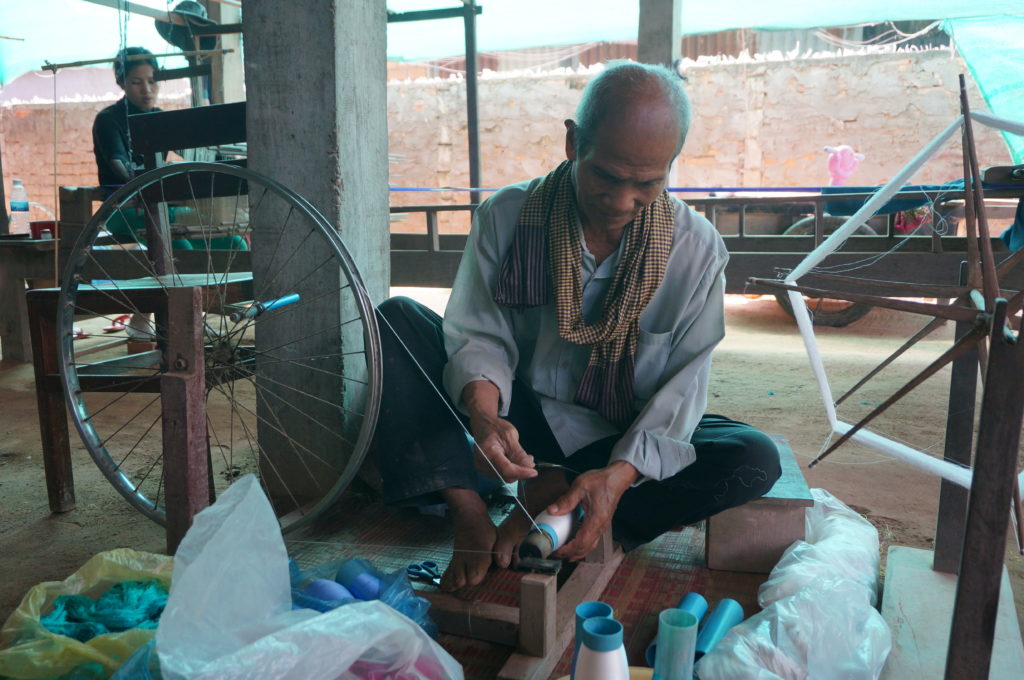
It was a fantastic, exhausting day, and we were grateful at the end to hop in an air-conditioned van for a ride to lunch. The restaurant was packed and we were the only Westerners there. We took our seats at long family-style tables and the smiling staff brought platters of sweet and sour fish, chicken Amok, and fried rice that we devoured immediately.
Grasshopper Adventures gives a hell of a bike tour and we highly recommend them if you’re ever in Cambodia.
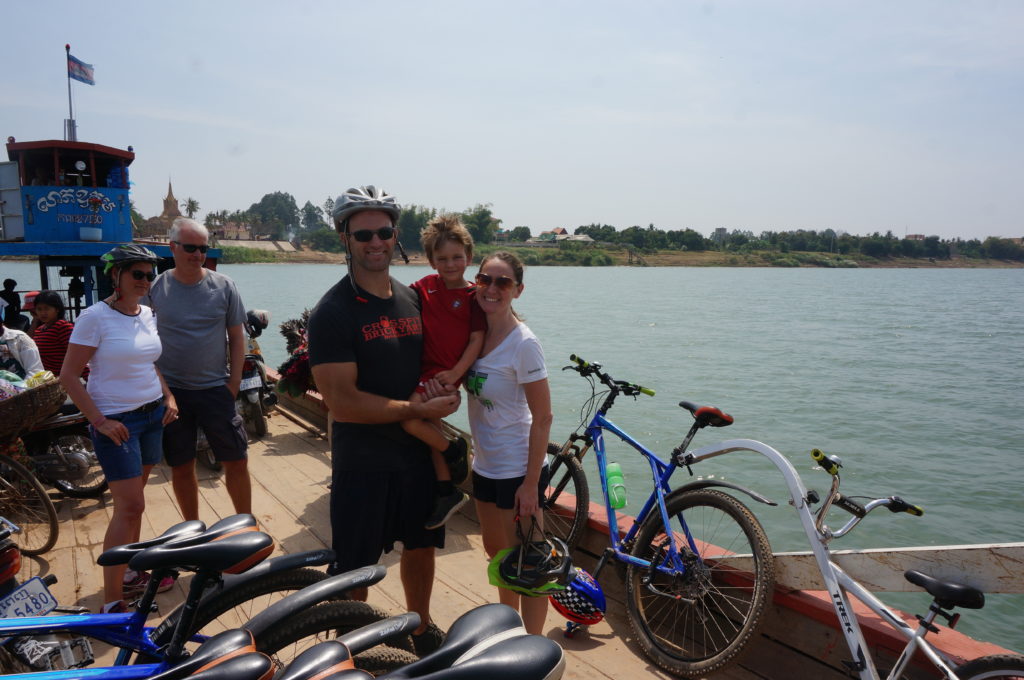
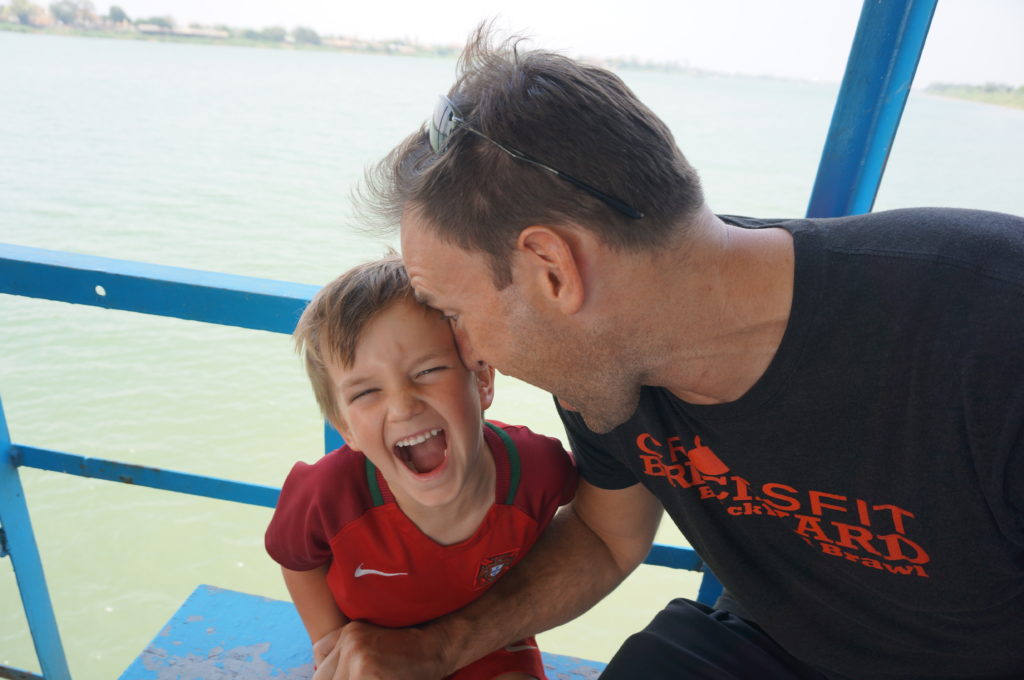
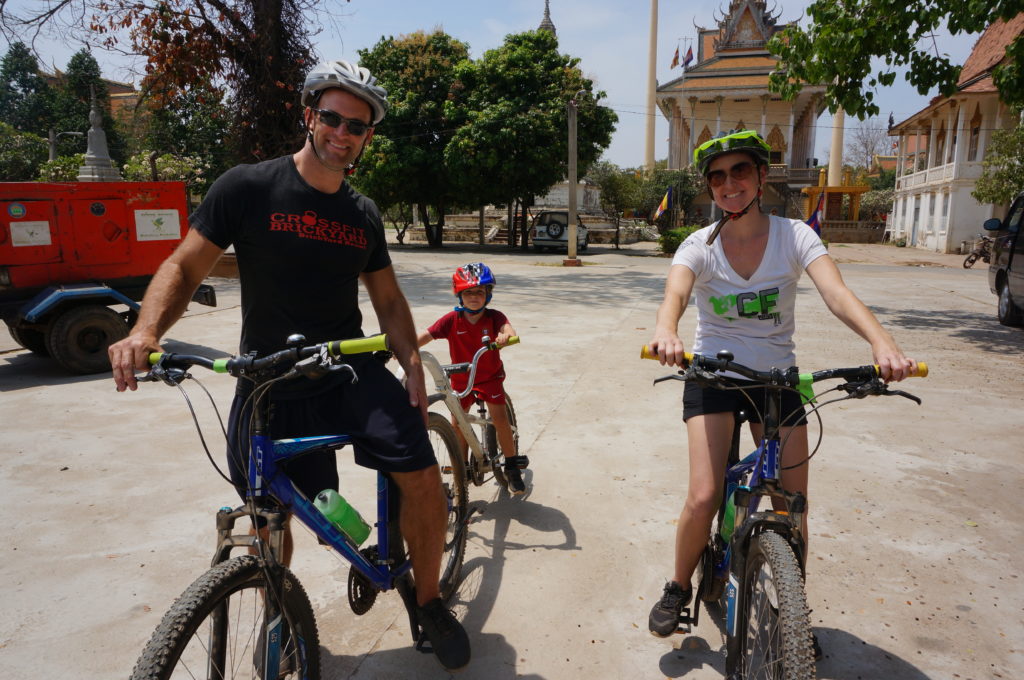
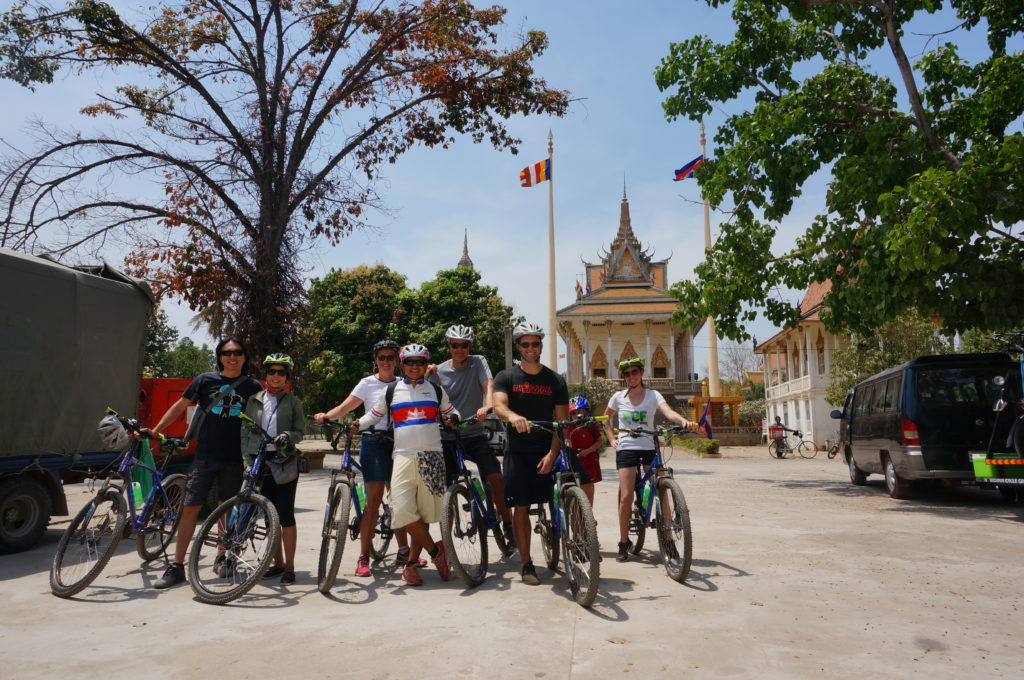
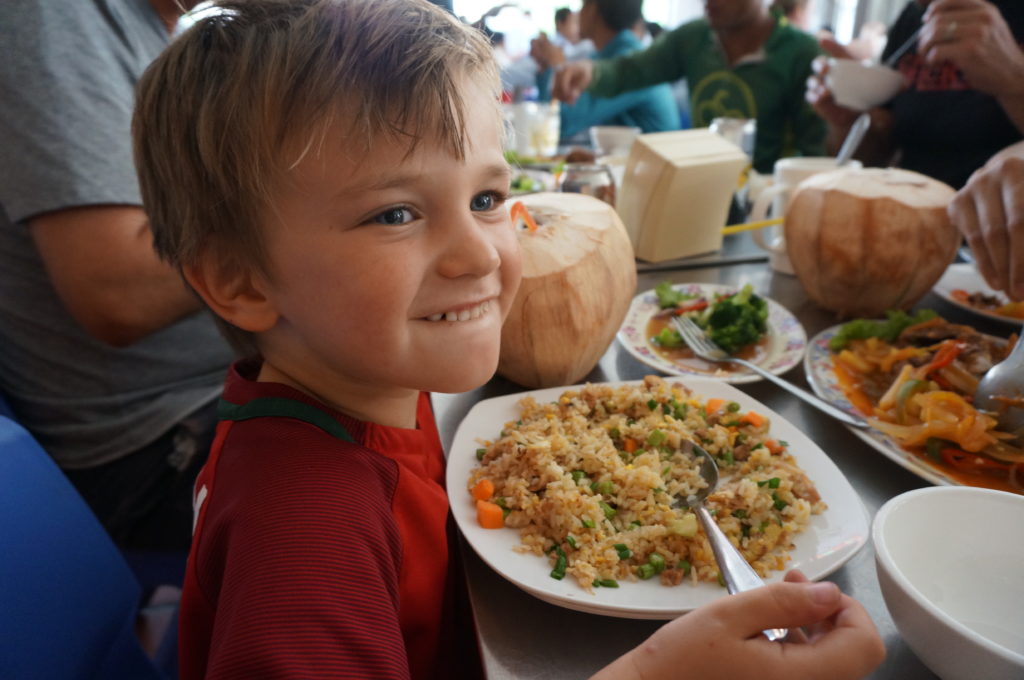
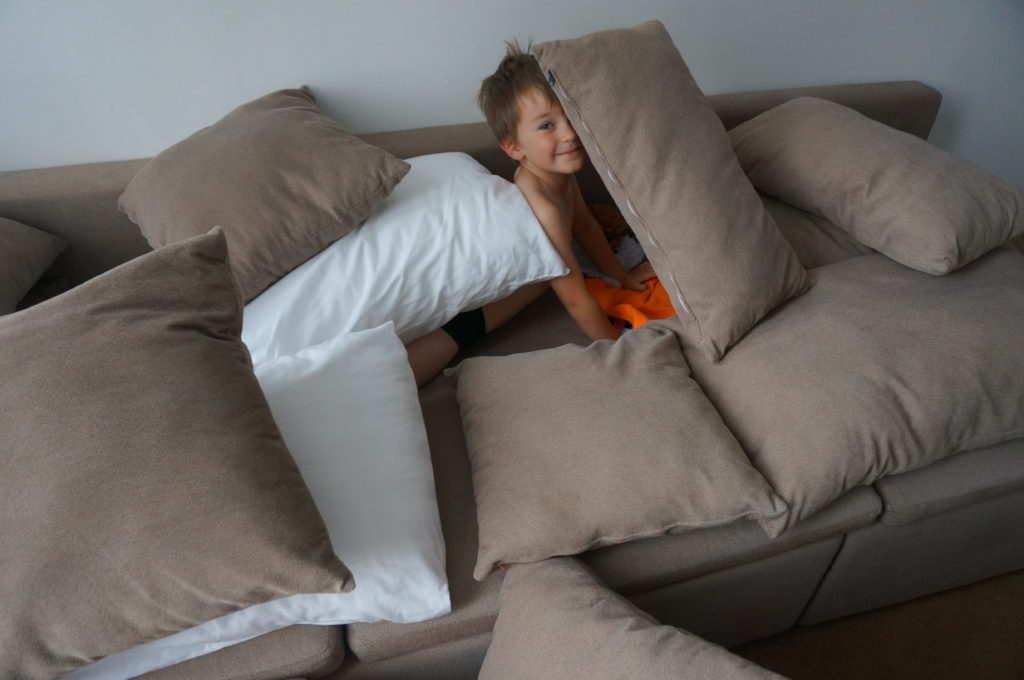
Our month in Cambodia was special, and we would return to Siem Reap, Phnom Penh, or Kampot without a thought. It’s an amazing country, and the people that we met in Cambodia hold a very dear place in our hearts.
Next: Thailand! (Again!)

